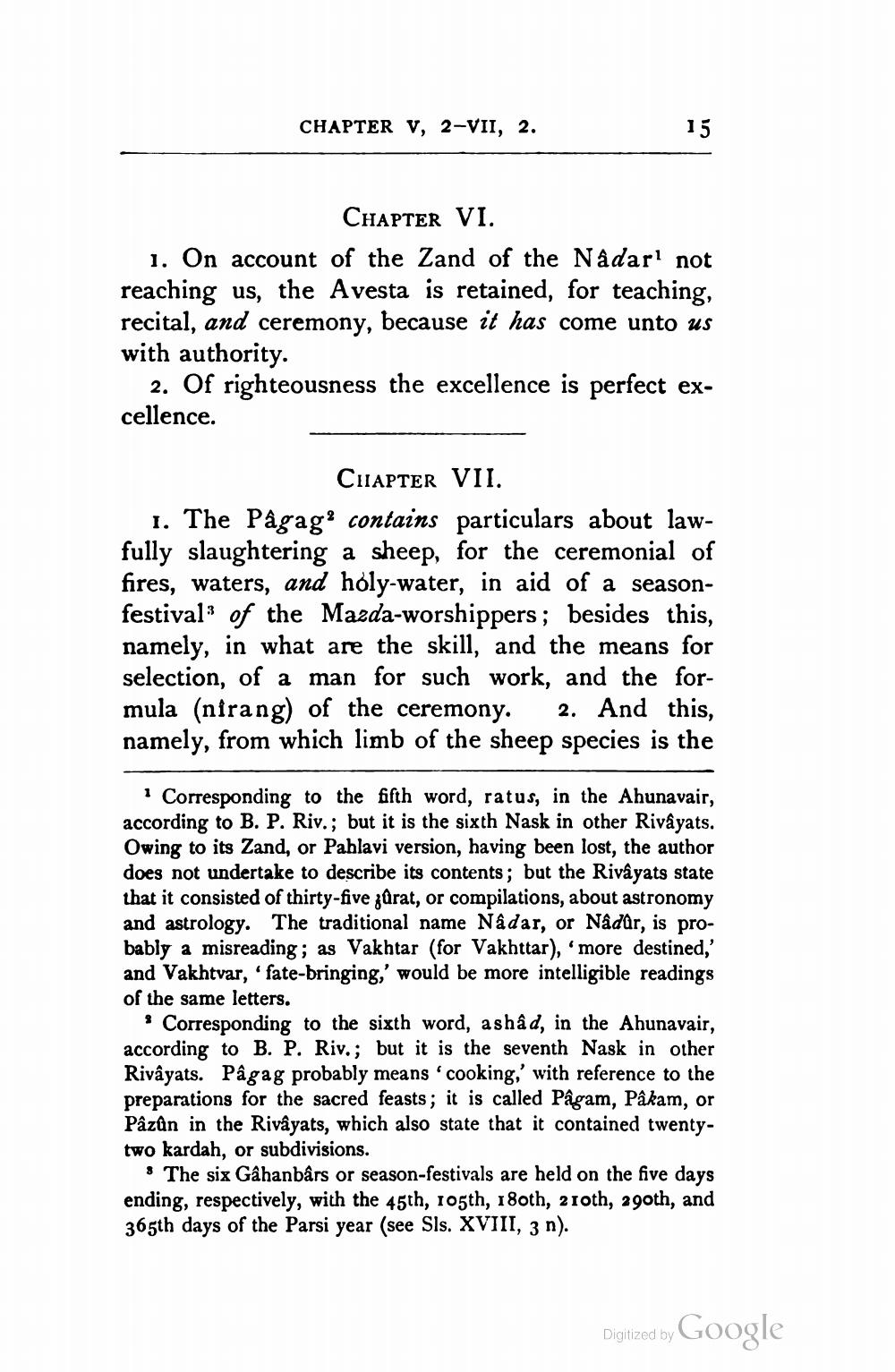________________
CHAPTER V, 2-VII, 2.
15
CHAPTER VI. 1. On account of the Zand of the Nâdari not reaching us, the Avesta is retained, for teaching, recital, and ceremony, because it has come unto us with authority.
2. Of righteousness the excellence is perfect excellence.
CHAPTER VII. 1. The Pâgag? contains particulars about lawfully slaughtering a sheep, for the ceremonial of fires, waters, and holy-water, in aid of a seasonfestival of the Mazda-worshippers; besides this, namely, in what are the skill, and the means for selection, of a man for such work, and the formula (nirang) of the ceremony. 2. And this, namely, from which limb of the sheep species is the
Corresponding to the fifth word, ratus, in the Ahunavair, according to B. P. Riv.; but it is the sixth Nask in other Rivayats. Owing to its Zand, or Pahlavi version, having been lost, the author does not undertake to describe its contents; but the Rivâyats state that it consisted of thirty-five zurat, or compilations, about astronomy and astrology. The traditional name Nadar, or Nådar, is probably a misreading; as Vakhtar (for Vakhttar), 'more destined,' and Vakhtvar, 'fate-bringing,' would be more intelligible readings of the same letters.
Corresponding to the sixth word, ashâd, in the Ahunavair, according to B. P. Riv.; but it is the seventh Nask in other Rivayats. Pâgag probably means 'cooking,' with reference to the preparations for the sacred feasts; it is called Pagam, Pakam, or Pâzûn in the Rivayats, which also state that it contained twentytwo kardah, or subdivisions.
* The six Gahanbårs or season-festivals are held on the five days ending, respectively, with the 45th, 105th, 180th, 2 roth, 290th, and 365th days of the Parsi year (see Sls. XVIII, 3 n).
Digitized by Google




